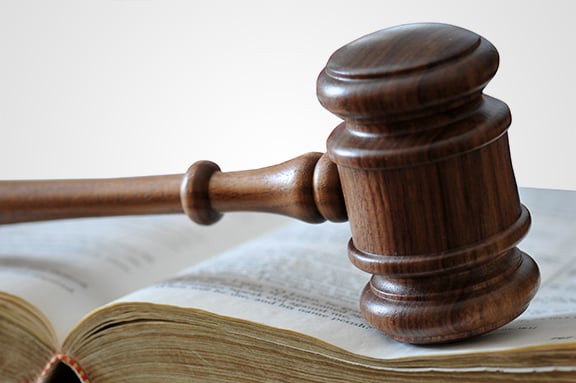
Bankruptcy can be a complicated process with many components. Here is a general breakdown of key parts.
Types of Bankruptcies
| Rehabilitation | Liquidation |
|
|
In a rehabilitation, creditors agree to wait for payment while the debtor establishes a payment plan to get out of debt. In exchange for keeping some assets, debtors may agree to pay creditors a portion of future earnings until the debt has been paid.
In a liquidation, a debtor is unable to develop a plan to eventually repay the debt in a timely manner and the debtor's assets are distributed to creditors. In this situation the debtor has no obligation to share future earnings with creditors.
The Bankruptcy Process
All bankruptcy cases proceed in a roughly similar manner.
- Within 180 days of filing for bankruptcy a debtor must undergo credit counseling with an approved agency.
- Most individuals may only file for Chapter 7 bankruptcy if they earn less than the median income in their state or they cannot afford to pay at least $7,025 over 5 years. All other debtors may file under chapter 11 or 13. Some exceptions may be found under USC section 707(b)(2)(A) using the bapca means test, but an attorney should be consulted to ensure your best path forward.
- Individuals must provide required documents to process their bankruptcy.
Documents Needed for Bankruptcy Filings
- Petition for Bankruptcy—A basic form
- List of Creditors—The names and addresses of people owed money
- Schedule of Assets and Liabilities—A list of ALL assets and debts
- Claim of Exemptions—A list of assets the debtor can keep
- Schedule of Income & Expenditures—The debtor's job, income and expenses
- Statement of Financial Affairs—A summary of the debtor's financial history and current status, recent payments to creditors, any property held by someone else on debtor's behalf
- Once a bankruptcy petition has been filed, a bankruptcy court issues an Order of Relief. This order indicates the debtor is under the protection of the court and a bankruptcy proceeding has been initiated.
- Once a bankruptcy proceeding has been initiated, a bankruptcy trustee is appointed. The trustee is responsible for gathering the debtor's assets and dividing them among creditors or reviewing and overseeing the execution of a repayment plan.
- Once the Order of Relief is issued the trustee calls for a meeting of creditors. At this meeting the debtor must answer questions about his or her financial status.
- Once the bankruptcy petition is filed an Automatic Stay goes into effect. An Automatic Stay prohibits creditors from taking steps outside of the bankruptcy court for debts that were incurred before the petition was filed.
How are bankruptcy debts repaid?
Bankruptcy debts are repaid based on the payment plan approved by the trustee. Creditors are prioritized and paid in the following order:
- Secured Claims—Claims secured by collateral (foreclosable assets) that can be sold.
- Priority Claims— In Order
- Alimony & Child Support
- Administrative Expenses (fees to trustees, lawyers & accountants
- Gap Expenses (expenses accrued by a business between initial filing and the order of relief)
- Payments to employees (No more than $11,725 per employee. Additional wages are categorized as unsecured claims)
- Employee Benefit Plans (for the period up to 180 days before filing & combined with wages cannot exceed the previously described $11,725)
- Consumer Deposits (consumers are entitled refunds up to $2,600 for deposits for goods no longer available)
- Taxes (Up to three years prior to filing and property taxes for one year prior)
- Drunken Injuries (Claims of anyone injured by a debtor who was driving while drunk or on drugs
- Unsecured Claims—In Order
- Secured Claims that exceed the value of collateral (foreclosable assets)
- Priority Claims that exceed the value of collateral (foreclosable assets)
- Everyone else who is still owed money if there is any money left.
Discharge
Once a bankruptcy plan has been approved by the trustee and the bankruptcy estate has been distributed to creditors, creditors cannot make a new claim for money owed before the filing EVEN IF THEY WERE NOT PAID IN FULL as a result of the bankruptcy. This forgiving of pre-petition debts is known as discharge.
Debts that cannot be discharged
- Income Taxes for 3 years prior to filing and property taxes 1 year prior.
- Money obtained fraudulently
- Any loan of or exceeding $600 used to purchase luxury goods within 90 days of the relief order
- Cash Advance on a credit card of or exceeding $875 made within 70 days of the relief order
- Debts omitted from the Schedule of Assets & Liabilities (a creditor was not notified and did not have the opportunity to make a claim)
- Money that the debtor stole or violated a fiduciary duty to obtain
- Money owed for alimony or child support
- Debts from intentional and malicious injury
- Fines & Penalties owed to the government
- Liability caused by operating a vehicle under the influence of drugs or alcohol
- Liability for breach of duty to a bank (This was added to address risky loan officers during the Savings and Loan Crisis in the '80s)
- Debts stemming from violations of securities laws
- As of 2019 Student loans can only be discharged if repayment would cause undue hardship (very difficult to prove).
Circumstances that prevent discharge
- Fraud—A court can revoke a discharge if it discovers fraud or an attempt to conceal debts.
- Acting in Bad Faith—A court can deny a discharge if the debtor made fraudulent transfers, ignored court orders, refused to testify, falsified records, or otherwise acted in bad faith.
- Repeated Filings for Bankruptcy—A debtor who has received a discharge for chapter 7 or 11 cannot receive another for at least 8 years after the prior filing.
Choosing an Attorney
Bankruptcy can provide an excellent opportunity for a fresh start, but at times the process can be challenging. For this reason it is critical to have a trusted and compassionate partner with your best interests in mind. At Porro Niermann Law Group, LLC our experienced bankruptcy attorneys have been serving families in Aurora and the northwest suburbs for over 70 years. We will help you navigate the complexities of filing for bankruptcy and stand with you every step of the way to secure your future. Call or email us today to schedule a free consultation.


